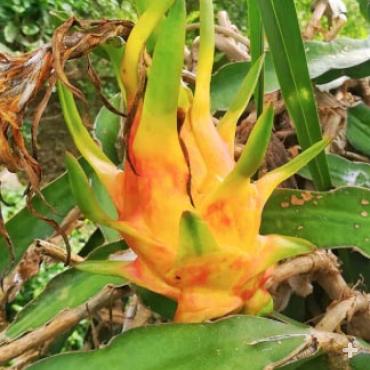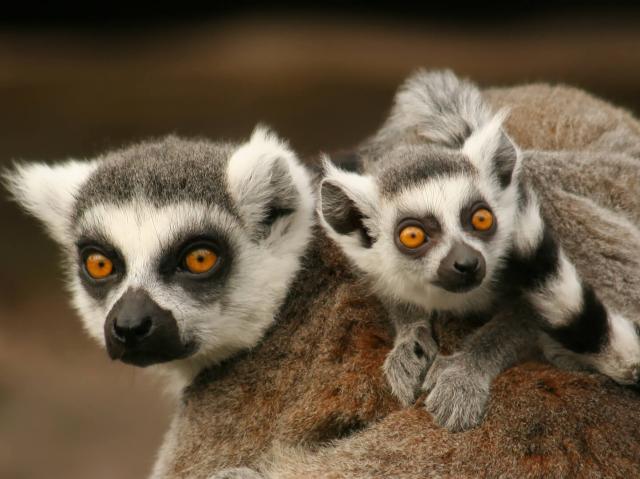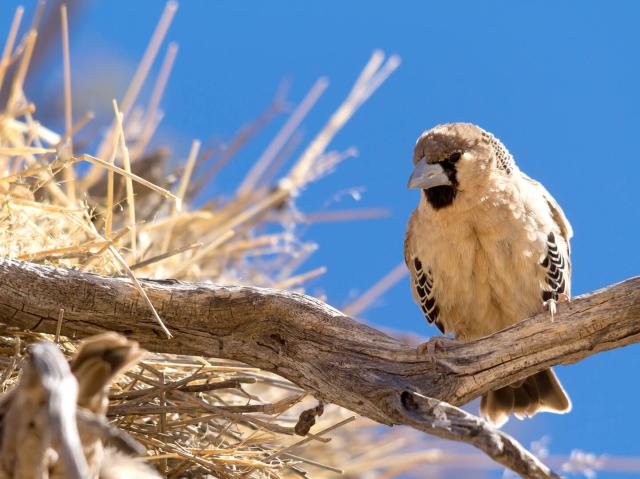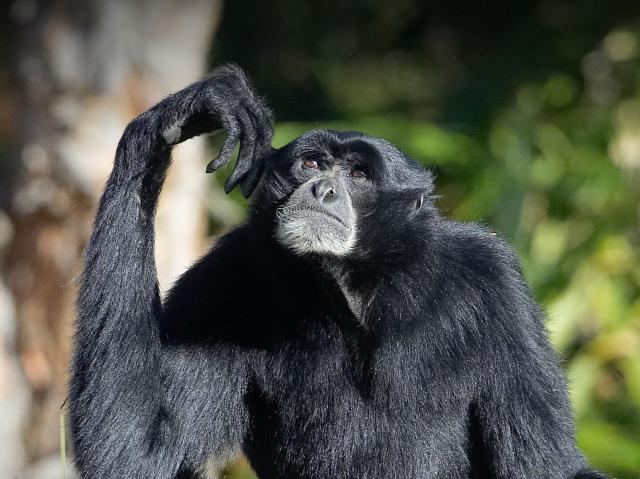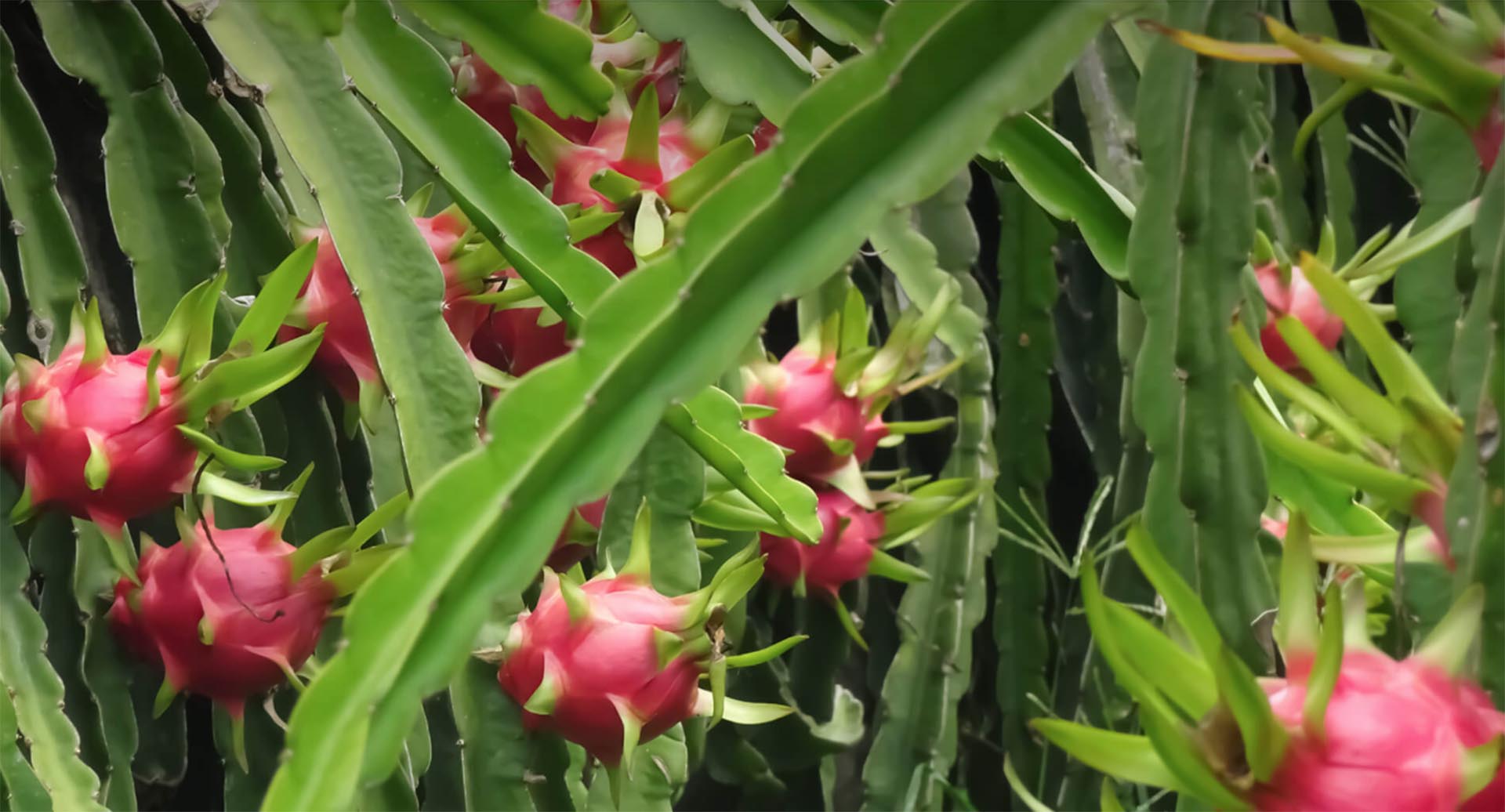
Dragonfruit (Pitahaya, Pitaya)

- DIVISION: Tracheophyta
- CLASS: Magnoliopsida (dicotyledons)
- ORDER: Caryophyllales
- FAMILY: Cactaceae
- GENUS: Hylocereus and Stenocereus

OVERVIEW
There is some taxonomic confusion about exactly what a “dragon fruit” is. For most of us who purchase the fruit at a supermarket or a juice bar, the term most often refers to the plump, juicy fruit of Hylocereus undatus, a vining cactus native to Central America. It’s widely cultivated around the world, especially in Southeast Asia, where it acquired the “dragon fruit” moniker. But the term can also refer to the fruit of any of the other 20 or so species of Hylocereus. In Central America, where they are native, these fruits are known as pitahaya. To make matters more confusing, two completely different genera of cactus, Stenocereus and Selenicereus, also include multiple species known as pitaya, pithaya, or pitayo. Among the best known of these are the organ pipe cactus Stenocereus thurberi, also known as pitaya dulce (“sweet pitaya”), and Stenocereus gummosus, also known as pitaya agria (“sour pitaya”). Both of these plants have traditionally been harvested by the Seri people for a variety of uses, including for food. Adding to the confusion, multiple species in Hylocereus and Selenicereus share the common name Queen of the Night. Besides the overlap in names, these genera are all members of the Cactaceae (cactus) family, and all three genera include species that produce fruit humans use for consumption, medicine, and other purposes. However, the term "dragon fruit" usually refers solely to the fruit of the Hylocereus genus.
CHARACTERISTICS
Although they are members of the cactus family, Hylocereus species all grow like vines, climbing, clambering, crawling, and sprawling as far as 30 feet (9 meters). In optimal conditions, some can grow almost 10 feet (3 meters) in their first year! Most take root in the soil and climb into trees, but some grow as epiphytes (on other plants). Their thick smooth stems branch frequently. A stem is deeply angled, with three wavy ribs and spines that are few and short.
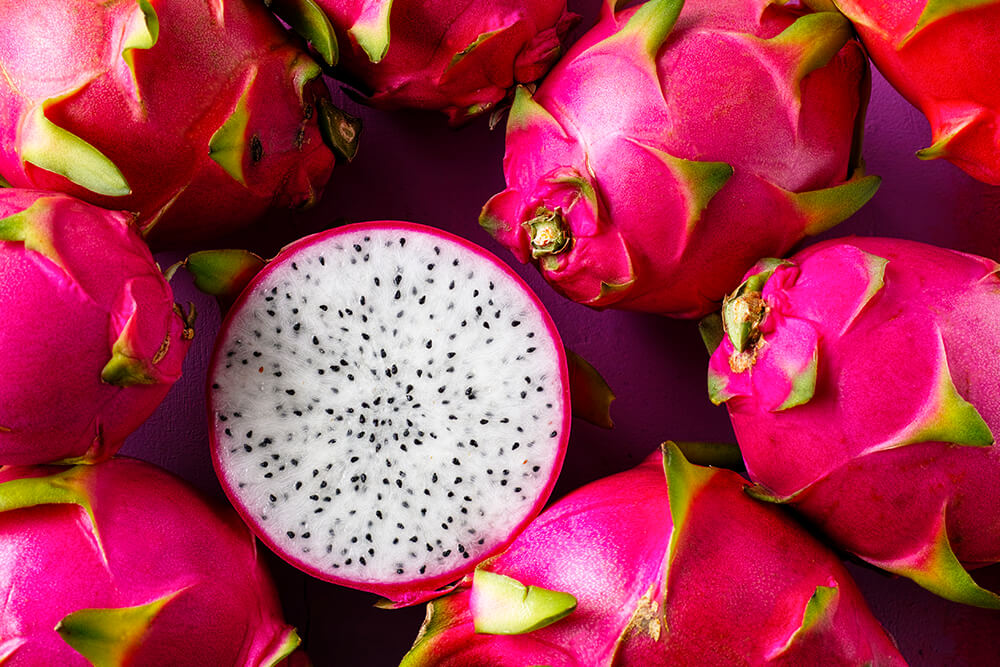
Hylocereus flowers at night, with large blooms arising from stem margins, along the edges of ribs. A flower lasts less than 24 hours; in fact, most close and wilt before dawn, relying on nocturnal pollinators such as bats and moths. Only a pollinated flower yields a dragon fruit, a fleshy berry with leathery, scaled skin. The dragon fruit most commonly seen in US grocery stores, H. undatus, has a reddish exterior and white pulp dotted with a multitude of tiny seeds. Most other dragon fruits follow suit, but some differ; for example, H. costaricensis has red pulp and H. lemairei has purple skin. Large dragon fruits can weigh almost 2 pounds (900 grams), but most are less than a pound (450 grams).
CULTIVATION
Though native to the Americas, dragon fruit has long been cultivated in parts of Southeast Asia, and today cultivation has spread across the globe, from Nicaragua, Colombia, and Ecuador to South Africa, Australia, Spain, Israel, and the US, among other places. Hylocereus plants grow quickly, and due to their sprawling, vining habit, must be trellised and tied. The mild, sweet fruit can be peeled and eaten raw (seeds included), or processed into juice, jam, syrup, candy, pastries, and even wine.
CONSERVATION
If dragon fruit, or its relative the pitaya, makes your mouth water, don’t feel guilty. The fruits available in most of the world are cultivated, mostly the wide-ranging H. undatus. But while commercially-grown dragon fruit is not threatened, some of the other species of Hylocereus and Stenocereus are. IUCN lists four threatened Hylocereus species, all in Central America, where the chief threat is agricultural expansion. Five species of Stenocereus are listed as threatened: four from Mexico and one in Colombia. Only one of these, S chrysocarpus is threatened by the local collection of fruits; expanding agriculture and cattle grazing are the main threats to the other four species. The most endangered pitaya of all? It may be Mexico’s S. chacalapensis, known locally as pitayo gigante. Fewer than 50 mature plants survive, with no signs of regeneration.
CITES lists all Hylocereus and Stenocereus cactuses on Appendix 2: “species not necessarily threatened with extinction, but in which trade must be controlled in order to avoid utilization incompatible with their survival.”
By supporting San Diego Zoo Wildlife Alliance, you are our ally in saving and protecting wildlife worldwide.
OUR COLLECTION
At the Zoo, the night-blooming H. undatus sometimes flowers and produces dragon fruits on the fence across the road from the Kopje, in the Tropical Fruit Grove.
FLOWER POWER
Hylocereus has the largest flowers in the cactus family. Before opening, a flower bud can be up to 11 inches (28 centimeters) long, and an open blossom can be 12 inches (30 centimeters) in diameter.
HAND WORK
In many of the places that it’s cultivated, Hylocereus must be hand pollinated due to the lack of suitable nighttime pollinators.




